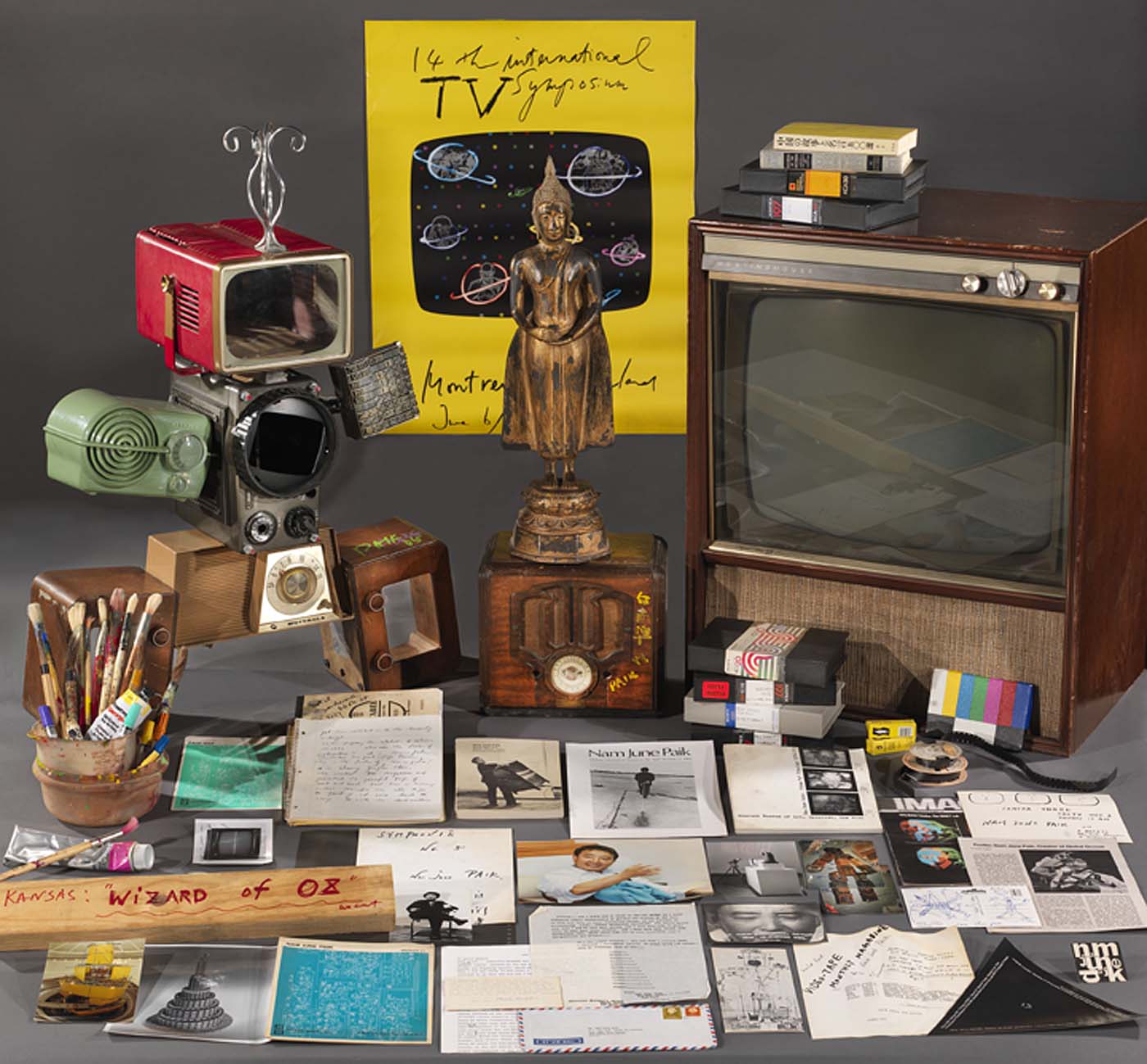Nam June Paik Archive

In 2009, the Smithsonian American Art Museum acquired the complete estate archive of the artist Nam June Paik, one of the most influential artists of his generation, who transformed television and video into artists' media. Paik's art and ideas embodied a radical new vision that was embraced around the world and changed global visual culture. With this acquisition, the American Art Museum becomes the institution of record for understanding this provocative artist's profound impact on the art world and for understanding the history of the moving image in twentieth-century art.
The Nam June Paik Archive consists of research material, documentation, correspondence, sculptural robots, and video and television technology. It provides unprecedented insight into Paik's creative process, his sources of inspiration, and the communities of artists on three continents with whom he worked for more than five decades beginning in the 1950s. The collective archive includes thousands of individual items that will be catalogued during the next several years.
The Archive includes early writings on art, history, and technology, correspondence with key artists and collaborators such as Charlotte Moorman and John Cage, a complete collection of videotapes used in his work, production notes for videotape and television projects, plans for video installations, documentation of large-scale television projects such as Guadalcanal Requiem (1977/1979) and installations including the massive The More the Better (1988), sketches, notebooks, and models. The archive also includes a full range of technology that Paik worked with, including a variety of early models of televisions and video projectors, old radios, record players, cameras, and musical instruments supplemented by technical manuals. It includes notes and hand-drawn plans for the Paik-Abe video synthesizer—invented in 1969 with Japanese engineer Shuya Abe—that transformed electronic moving-image making. Additional materials that provide insight into Paik's career are unpublished interviews, audiotapes, vintage photographs, documentation of early Fluxus performances from before and after Paik's move to New York City in 1964, flyers, announcements, posters, catalogues, and works in progress. A variety of toys, games, folk sculptures, banners, wall hangings, and the desk where he painted in his studio are also part of the Archive.
John G. Hanhardt, consulting senior curator for film and media arts at the Museum since 2006, is leading the effort to organize the Nam June Paik Archive and establish a study center at the Museum. He is the foremost expert in Paik's work, and was the organizing curator for two landmark exhibitions, the first in 1982 at the Whitney Museum of American Art, and the second a retrospective presented as the first exhibition of the new millennium in 2000 at the Solomon R. Guggenheim Museum in New York City. Once the archive is fully catalogued, it will be made available by appointment.
The Nam June Paik Archive is a gift of the Paik Estate through executor Ken Hakuta, the artist's nephew and an emeritus member of the Museum's advisory board of commissioners, with the agreement of Shigeko Kubota, the artist's widow.
The Museum has several significant works by Paik on permanent public view in the galleries, including an early work called Zen for TV (1963/1976), and two ambitious and massive video walls, Electronic Superhighway: Continental U.S., Alaska, Hawaii (1995) and Megatron/Matrix (1995).
New Acquisitions
- 9
- Other objects by this creator in this institution
- 4
- Objects by this creator in other institutions